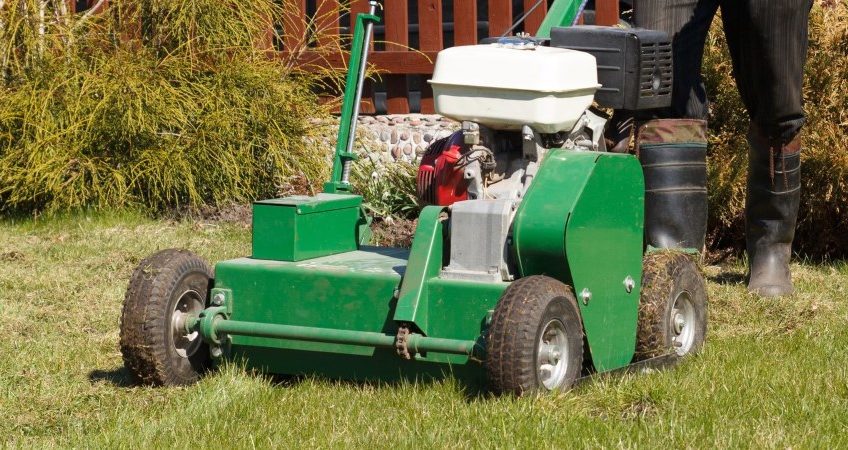After a hot and busy summer, your lawn can be a little worn out. Properly timed aeration helps to refresh and revitalize the grass in your yard by counteracting the effects of compacted soil and thatch- two conditions that often show up in the heavily used areas of a lawn. With aeration you are creating openings in the soil to help air, water and nutrients better reach the roots of your grass. In other words, you are helping your lawn to breathe. The results of aeration speak for themselves in a lusher and healthier turf.
But you may be wondering when is the best time to aerate your grass if you live in New England. We’ll answer that below and offer some tips for what you can do immediately before and after aeration to both maximize its affect and limit the appearance of opportunistic weeds.
Why Do You Need to Aerate Your Lawn?
For grass to remain healthy and grow to its fullest, its roots need access to sufficient air, water and nutrients. But when soil becomes compacted or there is a significant layer of thatch developing on the surface of your lawn, then the delicate roots are unable to reach these essential elements.
With compacted soil, the various particles in your soil have become pressed together so that there is very little space between them. Sometimes this is a result of heavy foot or machinery traffic; other times there could be a significant level of clay mixed in with your soil. Thatch on the other hand, is a tight mesh of living and dead stems, leaves, and roots that forms on the surface of the lawn, right between the soil and grass. Some rapidly spreading grasses, such as Kentucky bluegrass, are more prone to thatch build up.
A mere ½ inch layer of either compacted soil or thatch can significantly inhibit the flow of essential elements to your grass, and when stressful conditions arise, such as extreme heat or little rainfall, it will have limited endurance. Eventually, the grass in your lawn will thin out and die.
Aeration prevents this scenario. It involves punching holes into your lawn with either a a spike aerator or a plug aerator. A spike aerator is basically a set of tines or a fork that pokes holes into the ground, whereas plug aerators actually remove a plug of grass and soil from the lawn. Once completed, aeration allows moisture, oxygen, and nutrients to reach grass roots. It also helps break up thatch.
When is the Best Time to Aerate?
It’s best to aerate your lawn right before or during your turf’s peak growth period. Though aeration is good for your lawn, it can actually cause damage to your grass if it’s not properly timed.
The type of grass you have in your lawn will largely determine the best time of year to aerate. In New England, if you have a cool-season grass, such as bluegrass, fescue, and ryegrass, it’s best to aerate during the fall growth period. Your grass will start growing again as the temperature drops, so it’s a good time to aerate and loosen up any compacted soil. But, you need to do it early enough for the grass to recover before it needs to prepare for the winter months ahead. For best results, you should try to aerate your lawn sometime during the last week of August till the second week of September. Just don’t do it before a major rain. Aeration should never be performed when your turf is wet enough to be muddy.
What Should You Do After Aeration?
After you’ve finished aerating your lawn, here are a few tips to keep in mind in order to maximize the benefits:
- First, you should let all the soil plugs or any loose clumps of soil dry where they fell. These bits of soil are actually beneficial to your lawn as they will help promote growth.
- Watering your lawn after aeration is always a good idea.
- Applying fertilizer shortly after aeration will help your grass grow quicker and result in a fuller turf.
- For cool-season grasses, the best time to overseed a lawn is right after aeration since the resulting holes help seeds germinate.
- If you are not planning on reseeding your yard, then you can spread an application of weed killer to keep weeds from springing up in and around the holes.

